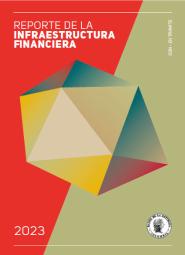Financial Stability Report - First Half 2022
The Report is published every six months, in May and November. This Report is accompanied by other special reports on financial stability published in June and December, which focus on topics of interest in this area.
The purpose of the Financial Stability Report is to present Banco de la República (the Central Bank of Colombia)'s assessment of the recent performance of credit institutions and their borrowers, as well as the main risks and vulnerabilities that could affect the financial stability of the Colombian economy. The objective is to inform financial market participants and the public and promote public debate on trends and risks affecting the financial system. The results presented here also serve as a tool for Banco de la República to make decisions to promote financial stability in the general context of price stability and macroeconomic stability objectives.
Main messages of the latest Financial Stability Report (key messages)
During the last quarter of 2021 and the first months of 2022, the recovery of lending activity in Colombia was consolidated:
- Credit accelerated its rate of expansion;
- The fall in non-performing loan and at-risk portfolios reflected the improvement in credit quality;
- Institutions accelerated lending to businesses and households while maintaining robust capital adequacy and liquidity indicators, thanks to a recovery in profitability and higher growth in equity and deposits.
Non-bank financial institutions recorded lower growth in their own and third-party account portfolios and a fall in their profitability given:
- Increased volatility in local markets;
- Gradual and anticipated tightening of global financial conditions without a major impact on the system's stability.
The participation of foreign investors in the domestic market for public debt instruments has remained stable.
Vulnerability analysis:
- Financial institutions are strong.
- The economy's exposure to sudden changes in global financial conditions has persisted.
- Rapid acceleration of household lending, especially in the consumer category.
- The debt ratio to disposable income for households is at a historic high.
Stress Test:
- Hypothetical adverse scenario of a contraction of the Colombian economy with high inflation, interest rates, and household indebtedness.
- The aggregate financial system still has the capacity to absorb additional shocks.
Boxes and shaded section
- Shaded section 1: Importance of Monitoring Credit Institutions’ Consolidated Balance Sheets
Financial Stability Department - Box 1: Negative Currency Mismatch of Colombia’s Real Sector in 2021
Carmona-Duarte, Álvaro David; Martínez-Osorio, Adrián and Niño-Cuervo, Jorge - Box 2: Results of the International Monetary Fund/ World Bank’s Colombian Financial Sector Assessment Program
Osorio-Rodríguez, Daniel Esteban





















































